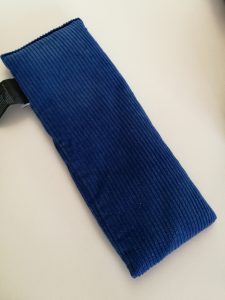First Aid
For mild to moderate musculoskeletal injuries
Put Ice On It!
This page is general advice only and no liability will be accepted for the use of this information. It is not accurate in all situations. If in doubt please seek a professional opinion.
If it might be a heart attack or a fracture, call the ambulance on 000.
If you are in too much pain to stand, walk, or sit in a car, call the ambulance.
The most beautiful words in the world are, “The ambulance is on its way.” (Ambulance subscription is cheap; ambulance rides without subscription are not cheap.)
If you are content that it is a moderate to mild musculoskeletal injury, then…
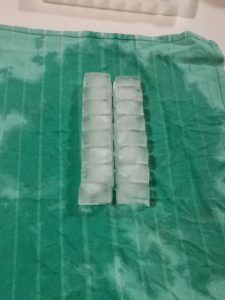
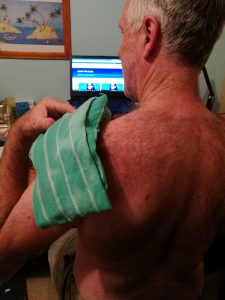
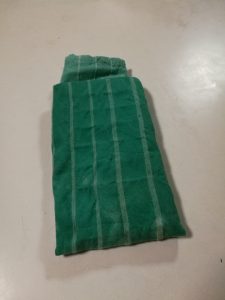

As we all learned in First Aid, RICER; rest, ice, compression, elevation and referral. The most powerful of these for injuries we see is ice.
Our preferred protocol is:
1. Run a tea towel under the tap and wring it out gently.
2. Place ice cubes in the wet tea towel. You need a big enough pad of ice to cover the whole site.
– The size of an ice cube tray is good for a low back or a shoulder
– Send someone to get a bag of ice if necessary.
Fold tea towel up so there is only one layer of fabric over one surface of the ice.
3. Run a little more water over it so the ice doesn’t stick to the fabric, and place single-layer side down on bare skin over the injury site. Cover it with a towel to catch the drips.
For the first 2 minutes it is on you will feel the cold, then the site will go numb.
Leave on for 10 minutes. Take off for 10 minutes, put back on for 10 minutes.
Repeat every hour or two for the first 24 hours post injury, when awake.
(Why not gel packs? As they defrost you have defrosted gel in contact with the surface, so it doesn’t remain as cold. As real ice defrosts it dribbles away, so you still have ice in contact with the injury site.)
Why Ice?
When you injure yourself you will have torn tiny blood vessels which leak one red blood cell at a time until the vessels clot off. This clotting takes up to 24 hours post injury. Red blood cells are corrosive things, and the body needs to mop them up as part of the healing process. The less of them escape, the faster you heal. The cold will close down leaky blood vessels.
Ice is also a handy painkiller. The pain will return as you defrost.
If you leave the ice on too long you cause a frostbite response. If the body thinks an area is freezing, it opens up the blood vessels to get heat in. This is the opposite of what we want it to do at this time.
It is hard to talk small children through the first 2 minutes of ice, and you may have to give up. They’ll still mend.
Where To Ice
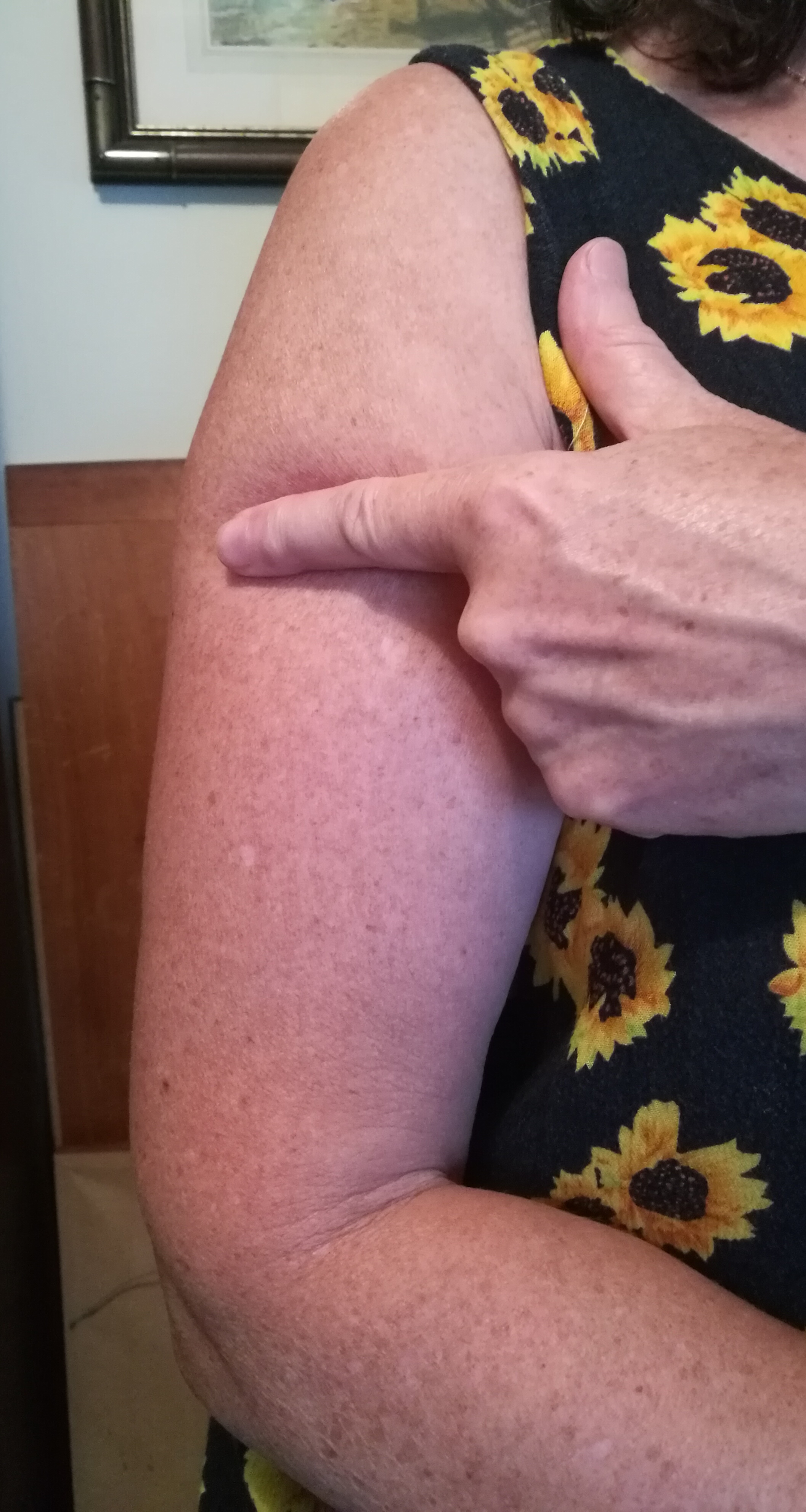
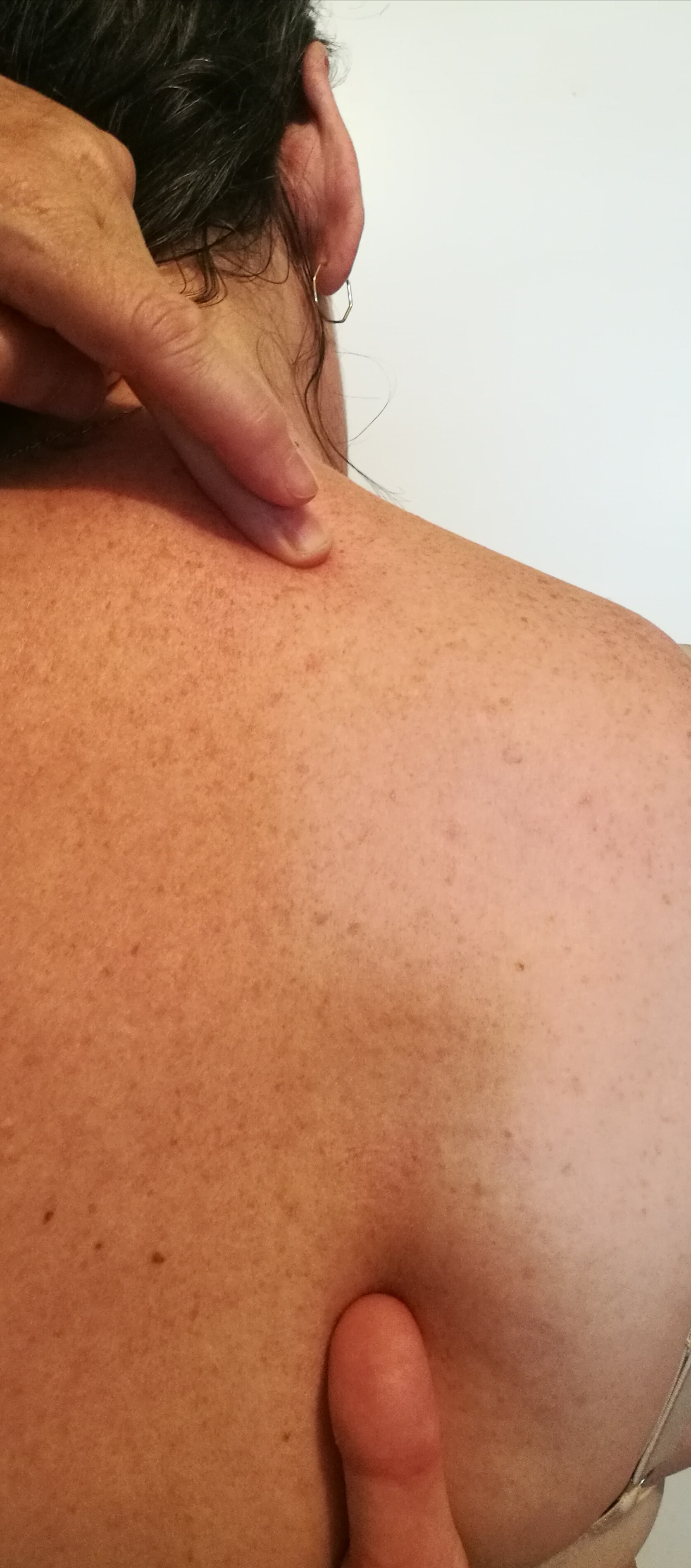
In most cases you ice where you feel the pain. The two big exceptions are:
- Pain coming from inside the shoulder joint will be felt at the middle of the upper arm, (pic 1) around the insertion of the deltoid muscle. Ice should be tried over the whole top of the shoulder joint.
- Pain along the inside edge of the shoulder blade/scapula, (between the fingers, pic 2) may be coming from the low joints in the neck. If icing the site doesn’t work, ice should be tried on that side of the low neck.
If you have neck pain and are having trouble getting to sleep, knock the area out with the ice, then fall asleep before it defrosts.
Where not to ice:
Don’t ice where blood vessels and nerves are close to the surface. This includes, behind knees, in the front of elbows, wrists, neck and groin, and underneath armpits.
When to use Heat
Heat is useful from the end of day 2 when it will relax muscle spasm and bring blood into the area, bringing in the construction materials for the repair job. Heat will give some pain relief in the first 2 days because it will relax muscle spasm and distract the brain from pain signals, but it will make the swelling and bruising worse at the same time, so it is not recommended then.
